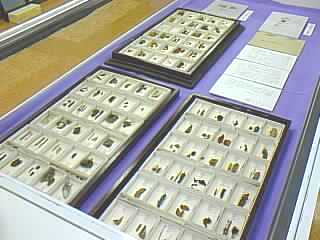−Kumagusu Minakata−
Kumagusu Minakata was well known in Japan as a person of erudition who, from childhood, had a great interest in natural history. He was active for a period of about 40 years from 1900. He explored Florida and Cuba which were so abundant with wild plants. He later visited London, and gained much of his knowledge at the British Museum. After returning to Japan in 1900, he began to collect fungi, lichens, algae and mosses, and studied them while continuing to publish many papers on folklore. He consolidated the foundations of Japanese myxomycology.

In 1926, Shiro Koaze presented a collection of ninety specimens of myxomycetes selected by Kumagusu Minakata to the Crown Prince who became the Showa Emperor in that year. It is said that the Emperor, who was a biologist, kept them carefully and studied them. The presentation bore fruit in Minakata's lecture to the Emperor in 1929, which was a very exceptional honor for a private citizen. Myxomycetes became associated with the name of Minakata and so Japanese myxomycology was encouraged. The present collection is pivotal in the development of the taxonomy of myxomycetes in Japan.